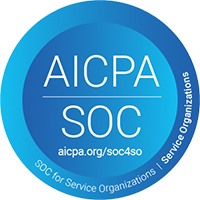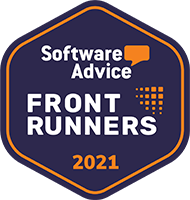Case Study: Service America Service Trucks
FOR MANY YEARS, FORT LAUDERDALE, FLA.-BASED WARRANTY CONTRACTOR SERVICE AMERICA relied on a tier-one ERP system for tracking inventory. That system “felt like we were back in the Stone Age, writing our part numbers on tablets with a chisel and hammer,” said Carlos Echazabal, who served as the company’s senior director of operations. Early on, the company had chosen not to use manufacturer bar coding, but created internal SKU numbers for every part. “So, we had number one all the way through 923,798,” Echazabal said. Anytime a technician went to a customer’s home, they had to manually key in every SKU of every part used. Sometimes they did, but sometimes, if they used multiple parts, they would forget one or two. And often, they simply keyed in an inaccurate part number. As a result, service trucks were only 35 percent to 40 percent accurate in their inventory. Warehouses did a bit better, posting an accuracy rate of between 73 percent and 75 percent.
The Solution
Eventually, the company realized it was not functioning efficiently and was spending more money than it needed to because of its outdated inventory system. They retained a consultant to shop for a new solution that would be both cost-effective and solve its inventory challenges.
“What eTurns offered was very lightweight. We didn’t have to change our procedures. It was a very quick turnaround.”
After evaluating 10 automated inventory replenishment apps, eTurns TrackStock became the clear choice, Echazabal said. “Probably the number-one deciding factor was that what eTurns offered was very lightweight. It did not require a lot of IT department integration, and we didn’t have to hire people to write script and change our procedures. It gave us a very quick turnaround.” In addition, eTurns’s solution offered configuration that matched the company’s needs.
Implementation
When Service America decided to modernize its inventory tracking system, the company took an aggressive approach to implementation. “We issued a challenge to ourselves to have all 100 of our vehicles upgraded within six months,” Echazabal said. The company opted to start with its trucks rather than warehouse because the need for more accurate inventory was more critical there, he said. “We had to bring in every vehicle, pull out every item to do a physical inventory, barcode the bins, then refill the trucks, as well as provide our technicians with a training course so they would become fully equipped eTurns specialists.” Service America made the decision to involve its technicians in setting up their trucks with newly bar-coded inventory and specifically placed inventory, so that they would understand where each part was located and also feel ownership of the process. Ultimately, the company was able to complete the process ahead of schedule – in just five months, completing an average of three trucks every 2.5 days. Initially there were minor bumps, mostly around technicians’ acceptance of the new system, Echazabal said. Some older technicians less familiar with smartphones were a little intimidated, “but the bigger hiccup was those who felt this is going to be temporary, that we would eventually go back to the old way,” he said. “But once everybody saw that it wasn’t going anywhere, it started rolling very smoothly.”
Results
In the 12 months Service America was able to use eTurns TrackStock inventory app, the company not only achieved the greater inventory accuracy it had hoped for, but also realized efficiencies and savings in areas it had not expected, Echazabal said.
Benefits of eTurns included:
- Inventory accuracy improved by more than 45 percent. Within the first year, inventory accuracy on the company’s 100 service trucks soared from about 35 percent to over 80 percent. “We were getting true turn rates as opposed to people hand-typing and keying in wrong numbers or not keying in a number at all. It was very simple for them to just scan the item. That just made it easier to keep a better count,” Echazabal said.
- Truck inventory levels decreased by over 30 percent. The increased inventory efficiency, in turn, allowed the company to greatly reduce inventory carried at any time on its service trucks. “Before eTurns, we had overstock on our trucks because we didn’t know what we would need and when,” Echazabal said. By getting a more accurate picture of what parts were being used, the company had a better idea of which parts it needed – and which it didn’t. Within three to four months, the company was able to reduce the line items routinely carried in a truck from 315 to between 150 and 175. “Our inventory on each truck was at $20,000 and we were able to reduce it to $14,000,” Echazabal said.
- Warehouse inventory decreased by over 45 percent. As a result of decreasing the inventory on the trucks, the company’s warehouse inventory was reduced from roughly $1.6 million to $875,000. Service America’s annual carrying costs were reduced by $131,250. Initially that inventory reduction made some technicians uncomfortable. “They love having their truck filled with inventory. It just gives them a sense of security,” Echazabal said. But when a technician would protest that an item being removed from the truck was something they used frequently, Echazabal said he could show them the inventory query that indicated the part hadn’t been used in years.
- Theft reduction. With such wide discrepancies between inventory counts and reality, some unscrupulous technicians were able to use excess or improperly counted inventory for side jobs that benefitted them but detracted from the company’s bottom line. The eTurns system provided what Echazabal called a watchdog to prevent that theft. “On a job site, they would have to key in the service order and then all the items that they scanned would be pulled on to that job. So, when they’re done with the job and they close out the ticket, they’re finished pulling parts from their truck. It just made it more difficult for them to steal because it shows what job they used it on as opposed to just coming off the truck.”
- Significant cost savings. One of the greatest benefits Service America enjoyed from implementing the eTurns app was greater efficiency in daily inventory procurement. That efficiency saved the company hundreds of thousands of dollars. Previously, technicians manually keyed in SKU numbers for items they had used during the day, and that would trigger replenishment from the stockroom. Then, the company contracted with an outside firm of overnight couriers to pick up the inventory from Service America’s warehouse and take it to the technician’s home or to a local storage facility.
“Our inventory on each truck was at $20,000, and we were able to reduce it to $14,000.”
“Once we started using eTurns, we uploaded all our materials and assigned to each our preferred vendor. So, when I hit an ROP (Re-Order Point), eTurns automatically detects it, and it automatically creates a PO,” Echazabal said. That automation reduced to one the number of people need to review the PO list for the next day. Originally, the company had eight buyers whose job it was to run restocking reports, shop the parts needed, create POs and send the POs to the vendors. After implementing the eTurns system, Service America was able to re-deploy all but one buyer to other roles where they had staff shortages. The more efficient inventory system also eliminated the need for the company to rent off-site storage facilities, because the technicians received replenishment parts directly from the vendor. The company had six of those storage facilities, at a cost of $175 each per month. But the biggest savings of all came from no longer needing those overnight couriers – which had cost the company $250,000 a year.
Download




